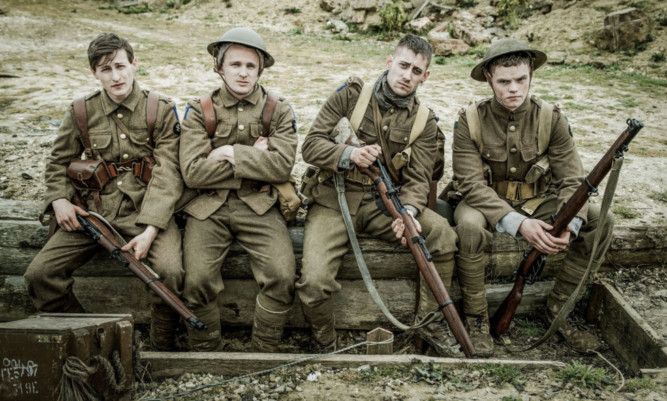
Teenage Kicks had moving undertones.
“Modern warfare is brutal,” the opening caption told us. “100 years ago it was unimaginable.”
It was also hard to imagine how BBC3 the youth channel where you can begin sentences with digits were going to adequately replicate the Battle of the Somme.
Four hundred and twenty thousand British soldiers fell in the five month battle but this one-hour film had a cast that could have arrived in a mini-bus.
However, in concentrating on the recorded experiences of one man, Private Paddy Kennedy of the 18th “Pals” Battalion, Manchester Regiment, the drama gave us a very real picture of the human cost of war at its base level.
After being shown going through basic training (accompanied by the bold choice of “Teenage Kicks” by The Undertones), Private Kennedy and his best mates, Andy and Henry, were among the lucky ones on the horrendous battle’s opening day.
They survived the initial onslaught (20,000 men went over the top to their deaths) and achieving their objective (the Army as a whole only advanced three miles in three weeks).
They then got lost in the fog of war, digging in surrounded by dense forest, cut off from their lines of communication and shooting at shadows until finding their way back to the British lines.
Henry was killed by shrapnel. Andy brutally stabbed a German to death. Both incidents hung heavy on Private Kennedy.
Another weighty issue was tackled when Kennedy, now reunited with his unit, was co-opted to a firing squad to execute a deserter.
The man turned out to be a soldier he’d encountered while lost in the woods who said he was also trying to find his way back. There but for the grace of God . . .
The second Our World War didn’t quite match the first (featuring the story of the war’s first two Victoria Crosses) or next week’s final instalment, which ends with a beautifully subtle sequence that reminds us who we owe our freedom to.
But taken as a trilogy it has been a superb series that will hopefully have been seen by BBC3’s younger audience.
“It’s our misfortune to be witness to these times,” an army chaplain told Private Kennedy.
A century on, anyone who thinks the conflict doesn’t concern them should be made to see this.
Our World War, BBC3, Thursday.

Enjoy the convenience of having The Sunday Post delivered as a digital ePaper straight to your smartphone, tablet or computer.
Subscribe for only £5.49 a month and enjoy all the benefits of the printed paper as a digital replica.
Subscribe